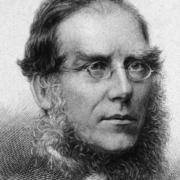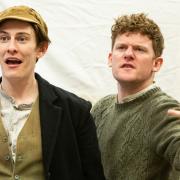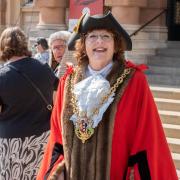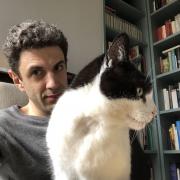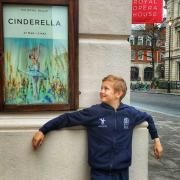Polly Crosby’s books are inspired by the shape-shifting Suffolk coastline where she grew up. Her latest lyrical novel, Vita and the Birds, is set in Walberswick and is propelled by her own history of survival against the odds.
Eerie and magnificent, a glass cathedral glints from the sand dunes and reed beds of the Suffolk coast.
Inside, tropical vegetation and brightly-coloured birds are taking over and secrets swirl.
Writer Polly Crosby grew up in Walberswick and has set her latest lyrical novel, Vita and the Birds, in her own version of the village.
Fluid and poetic the compelling story flows through familiar-but-fictional land and seascapes, tracing the tide-lines of the past back through generations.
Hidden in the reeds between land and sea is a glass folly, a cross between a cathedral and a winter garden, linking the lives of aristocratic Vita Goldsborough in 1938 and Eve Blakeney, who spent childhood holidays here and returns, mourning her mother, in 1997.
Close by is the beach studio where Eve’s artist grandmother once lived and worked. As Eve clears it out she discovers a web of links between Dodie and Vita and the glass cathedral of the marshes. Stories of missing children add to the atmosphere of unease.

Vita had been trapped and isolated, her life controlled by an older brother. Eve is lonely and grieving too, and drawn into the story of Vita and Dodie and a shattering secret which reverberates across decades.
The triple time-line (of the 1930s and of Eve as child and young woman) story is the latest by a critically-acclaimed author who has her own remarkable history.
Polly was the first baby in the world to be diagnosed with cystic fibrosis by the heel-prick test.
Born in Ipswich in 1980, she was three-months old when her parents were told she would not live beyond childhood.
Polly’s mother, a nurse, already suspected something was wrong with her third daughter, before the results of the heel-prick test at Ipswich hospital revealed she had cystic fibrosis.
Polly was not expected to celebrate her 10th birthday but survived through a regime of physiotherapy, nebulisers, intravenous antibiotics and hospital stays.
‘My parents treated me exactly like any other child,’ she said. ‘I wasn’t wrapped up in cotton wool and I was allowed to go out in the Suffolk countryside and get muddy and forget to wear my coat, like any other child.’

Remarkable new drug treatments meant she survived to marry, have a child of her own and become an award-winning writer – spurred on by knowing her time might be limited.
‘It has always made me want to push to do things as quickly as possible and plan ahead in the hope that I will get things done while I’m well enough,’ she said.
Polly met her husband as she moved house in Norwich. ‘I locked myself out by mistake and the only person I knew in the area was this nice antiques dealer I had met the day before because I wanted to buy some furniture. I thought I’d go and say hello to him and tell him my predicament,’ she said. ‘I told him what had happened and he said, ‘I’m just about to go to Southwold for chips and a walk on the beach do you want to come?’ And I got into this unknown man’s van and the rest is history!’
Polly began writing as a child and completed her first (unpublished) novel after returning home from university, too ill to cope with the course.
‘I always wanted to be a writer or an artist,’ said Polly, who also creates jewellery from her miniature paintings, which she sets in resin as silver pendants.
Her first published novel, The Illustrated Child, was called ‘a classic in the making’ and ‘an extraordinary debut.’
The haunting coming of age story is set in 1980s Suffolk where Romilly lives with her eccentric artist father. As he succumbs to early-onset dementia Romilly realises his picture books contain a hidden treasure hunt, just for her, unlocking disturbing secrets of their past in a watery landscape of rivers, reeds, water meadows and marshes.
“There’s something about that sort of landscape which really is close to my heart,” said Polly, whose second book, The Unravelling, is set on an island, drenched in secrecy and inspired by Orford Ness.

“I like to change things, start with something real and then twist it to make it my own,” she said.
The geography of shifting sand and shingle, crumbling concrete bunkers and blast shelters, is the backdrop for a story of a girl, hired to catch butterflies for an elderly woman. Something terrible has happened here and the wild beauty of the coast has troubling undertow of strange mutations and submerged memories.
The glass cathedral in Vita and Birds was inspired by the stunning (stone) church at Blythburgh which is often called ‘the cathedral of the marshes,’ and the soon-to-be-restored Winter Garden in Great Yarmouth. ‘I’ve always been drawn to its fragile, decrepit beauty, not to mention the terrifying thought of all those panes of glass, loose and cracked, that might fall at any moment,’ said Polly.
‘When I write I go back to my childhood in Suffolk because it was such a beautiful place to grow up,” said Polly.
‘I’m a similar age to my main character, Eve, and I very much enjoyed writing the scenes of teenage Eve in the 90s, sitting round a campfire on the beach and sharing bottles of illicit wine with her brothers and her friends. It took me back to my own teenage years there, growing up in such an idyllic place.
‘Walberswick and the surrounding marshland had such an impression on me that even now my stories always seem to drift towards it, echoing in them the faintly eerie landscape, reedbeds shrouded in mist, and the ever-changing sea and skies.’
Vita and the Birds by Polly Crosby is published by Harper Collins.







